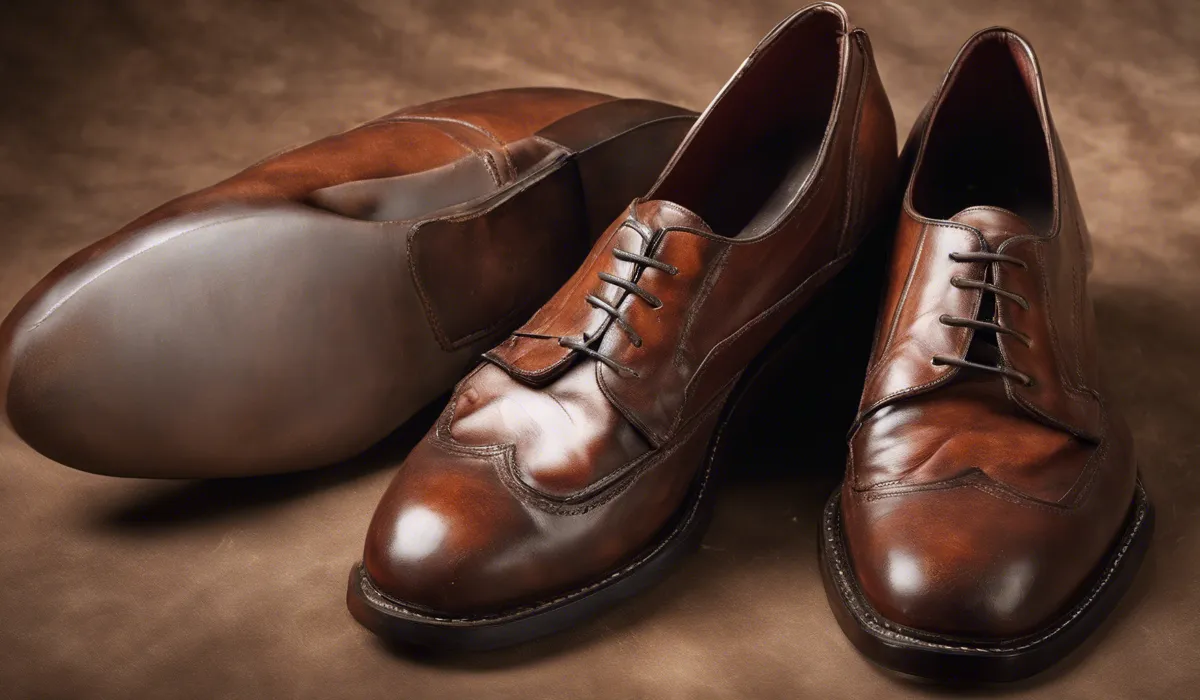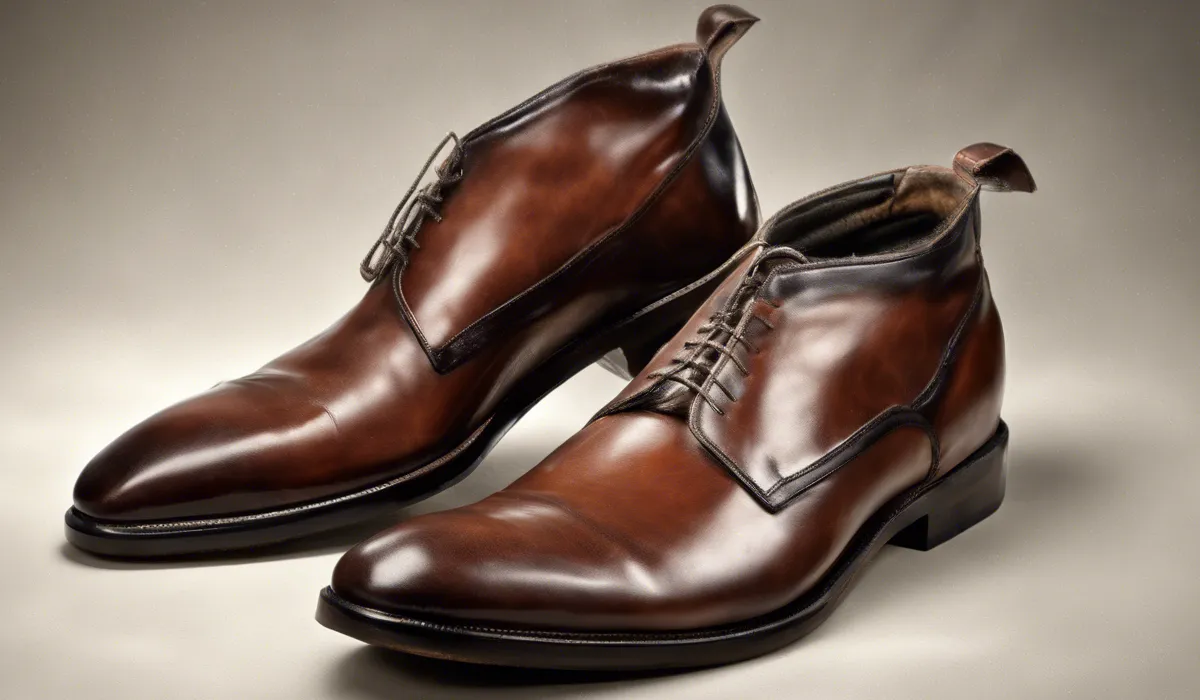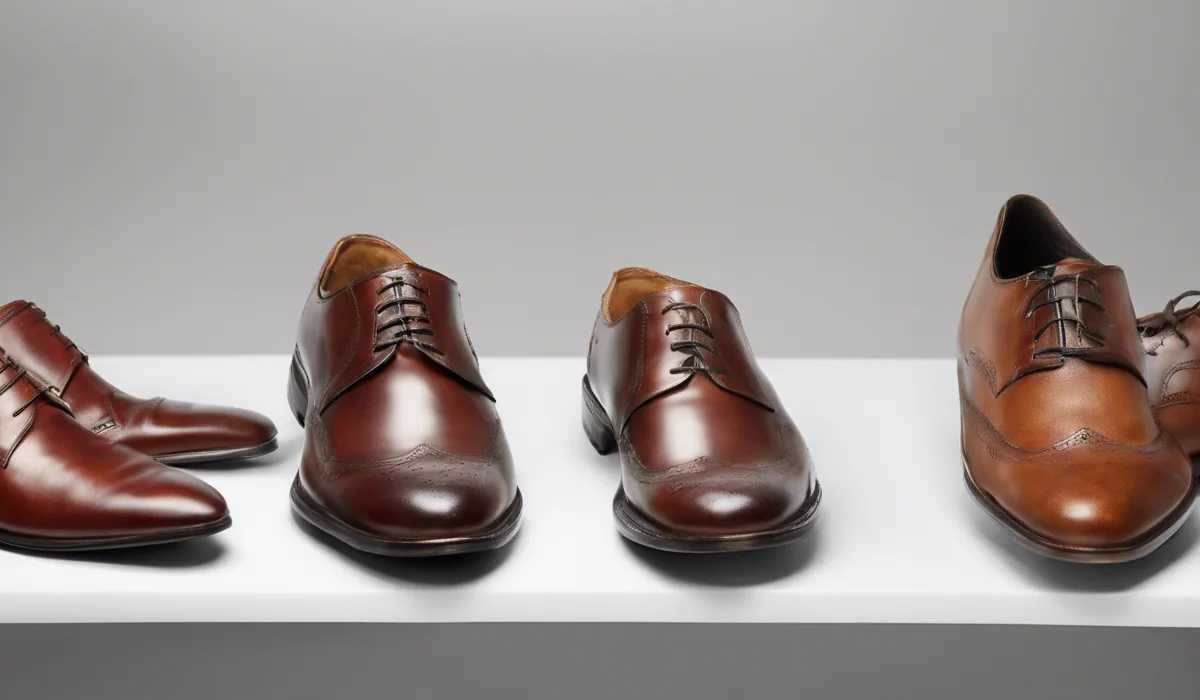To store leather shoes without mold, keep them in a cool, dry place with good air circulation. Use silica gel packets to absorb moisture and stuff shoes with newspaper to maintain shape. Regularly clean and condition the leather to prevent mold growth.
Understanding the Causes of Mold on Leather Shoes

What Is Mold and Where Does It Thrive?
Mold is a type of fungus that flourishes in environments that are moist, warm, and dark. It reproduces through tiny spores that float through the air, landing on surfaces where they can grow.
When the conditions are just right, with enough humidity and warmth, these spores can attach to materials like leather and begin to multiply, leading to visible mold growth and a musty odor.
The Impact of Improper Storage on Leather Shoes
Storing your leather shoes without proper care can lead to irreversible damage. When leather shoes are kept in dark closets or boxes without airflow, they become a breeding ground for mold.
The leather can then discolor, stiffen, and even start to fall apart as the mold digests the material.
Contributing Factors to Mold Growth on Leather
Several factors contribute to the growth of mold on leather shoes. High humidity is the main culprit, as it provides the moisture that mold spores need to grow.
Lack of ventilation compounds the problem by trapping moist air close to the leather. When shoes are stored without being fully dry, or in an area that experiences temperature fluctuations, the risk of mold growth increases.
Best Practices for Storing Leather Shoes

Pre-Storage Cleaning Is Crucial
Before putting your leather shoes away for storage, it is essential to clean them thoroughly.
Any dirt, salts, or residues left on the leather can attract moisture and foster mold growth.
Use a soft brush and a cleaner designed for leather to remove surface dirt and ensure the shoes are completely dry before storage.
Creating the Ideal Storage Environment
The best environment for storing leather shoes is cool, dry, and well-ventilated. Aim to keep the temperature consistent and the humidity level below 50% to prevent mold spores from thriving.
Closet dehumidifiers or a room with air conditioning can help maintain these conditions.
Choosing the Right Storage Containers and Materials
Select breathable storage options like cloth bags or boxes with ventilation holes. Avoid plastic bags and airtight containers, as they can trap moisture.
If using boxes, line them with acid-free tissue paper to absorb any potential moisture and keep the shoes in their best shape.
Desiccants and Moisture Control
Desiccants like silica gel packets are excellent for absorbing excess moisture in shoe storage areas.
Place these packets inside the shoes and in the storage container to help maintain a dry environment.
Remember to replace or recharge the silica gel according to the manufacturer’s instructions.
Regular Inspection and Maintenance
Periodically inspect your stored leather shoes for signs of mold or moisture. This allows you to address any issues before they become serious problems.
If you detect moisture or a musty smell, remove the shoes from storage, clean them, and address the cause of the moisture before returning them to storage.
Preventative Measures for Long-Term Care

Using Leather Conditioners and Protective Sprays
Regular application of leather conditioners can keep your shoes supple and less susceptible to cracking, which can prevent mold from taking hold.
Protective sprays create a barrier that repels water and stains, further safeguarding your shoes from mold-causing moisture.
Ensuring Proper Ventilation in Storage Areas
Good air circulation is key to preventing mold. Make sure your storage area, such as a closet or wardrobe, is not overcrowded and allows air to move freely.
You may even want to install a small fan or vent to promote airflow, especially in areas without natural ventilation.
Routine Cleaning and Airing Out Your Shoes
Even while in storage, shoes benefit from being aired out. Every few months, take your shoes out of storage and let them breathe.
Wipe them down with a dry cloth and allow them to air out in a cool, dry place away from direct sunlight before returning them to their storage spot.
Avoiding Mold-Prone Storage Areas
Areas like basements and attics are often prone to fluctuations in temperature and humidity, making them risky for storing leather shoes.
Instead, opt for an interior closet or a space that is less likely to experience environmental extremes. This will help ensure your shoes remain mold-free.
FAQs About Storing Leather Shoes to Prevent Mold
What is the best way to store leather shoes to avoid mold?
Store leather shoes in a cool, dry place with good air circulation, and include silica gel packets to absorb excess moisture.
How can I maintain the shape of my leather shoes while storing them?
Stuff your leather shoes with newspaper to help maintain their shape during storage.
Can cleaning products help prevent mold on leather shoes?
Yes, regularly cleaning and conditioning the leather can prevent mold growth on your shoes.
Are there any specific products I should use to prevent mold on leather shoes?
Using silica gel packets is an effective way to absorb unwanted moisture and protect your leather shoes from mold.
What should I avoid when storing leather shoes to prevent mold?
Avoid storing leather shoes in damp, poorly ventilated areas, and do not enclose them in plastic bags which can trap moisture.
Final Thoughts
To prevent mold on leather shoes, ensure they are kept in a cool, dry environment with ample air flow.
Utilize silica gel packets to control moisture and stuff the shoes with newspaper to preserve their shape.
Regular maintenance through cleaning and conditioning is essential for mold prevention.
